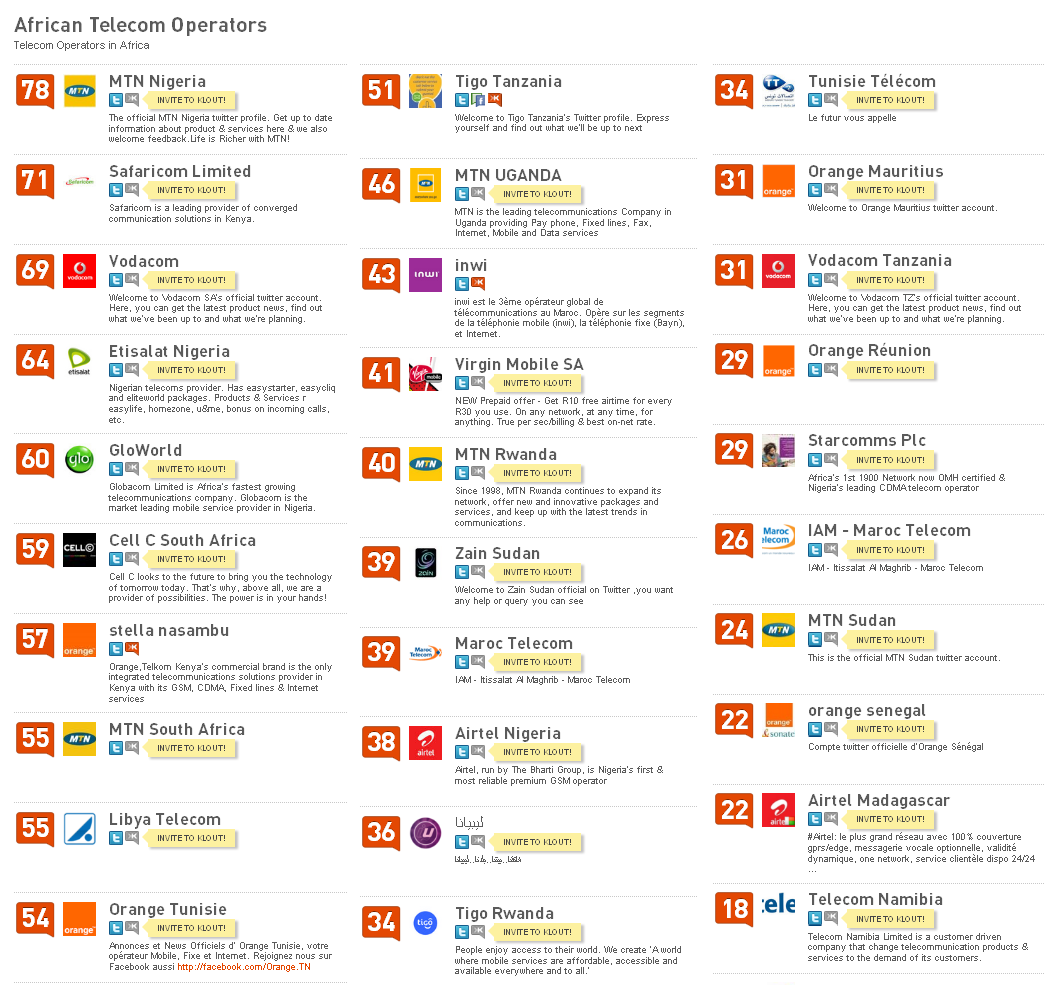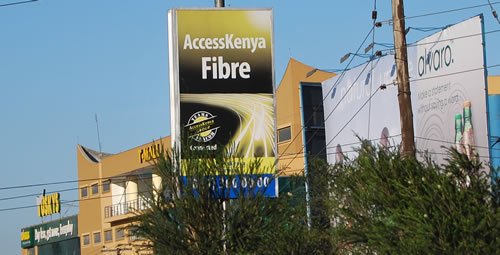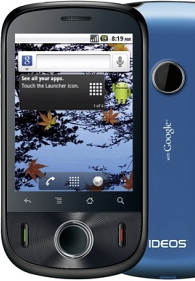AITEC announces expert speaker line-up for AfriHealth Conference, Nairobi, 30 November – 1 December 2011
OPENING PLENARY
Consolidating the gains of technological innovation in healthcare through effective management
Professor Yunkap Kwankam, Executive Director, International Society for Telemedicine & eHealth (ISfTeH), Switzerland
Aiming for a more integrated approach in healthcare delivery at national and local levels
Dr Katherine Getao, Head of eGovernment, Office of the President, Kenya
The economics of eHealth
Professor Maurice Mars, Head, Department of Telehealth, University of KwaZulu-Natal & President, South African Telemedicine Association
Ericsson’s mHealth Solutions – use cases and success criteria to enhance healthcare delivery
Rainer Herzog, Head of Strategy & Business Development mHealth & eHealth, Ericsson
mHealth: Turning hype into delivery
mHealth reaches puberty: Hype & hyperventilation
Bright Simons, Founder, mPedigree, Ghana
Using mobile telephony as an innovative communication channel for family planning
Bas Hoefman, Text to Change, Kenya
mHealth and the required ecosystem in East Africa
John Kieti, mLab, Kenya
PLENARY 2
An overview of latest worldwide trends in telemedicine
Frank Lievens, Board Member & Secretary, International Society for Telemedicine & eHealth, Belgium
Addressing the fragile environment of e-health in resource-limited settings
Dr Christoph Larsen, synaLinQ, Vietnam & Kenya
Accessing funding for healthcare initiatives in Africa
Ken Nwosu, eHealth Ontario & McMaster University MSc eHealth Programme, Canada
Pharmaceutical management
Anti-counterfeit systems for pharmaceuticals
David Svarrer, CEO, Digital Age Institute, Kenya
Using IT for improved pharmaceutical care delivery in developing countries: A case study of Benin
Dr Thierry Oscar Edoh,University of Bonn & German Federal Army University of Munich, Germany
Case Studies 2
A Multilingual Expert System for Ubiquitous Diseases Diagnosis (MESUDD)
Dr John Oladosu, Lecturer, Ladoke Akintola University of Technology, Nigeria
Community-based eHealth promotion for safe motherhood- A case study from Khyber Pakhtoonkhwa, Pakistan
Dr Shariq Khoja, Director AKDN eHealth Resource Centre, Aga Khan University, Kenya
Business models for effective service delivery: Rural Health Systems
Changing African healthcare through private sector technology innovations
Steve Landman, CEO, Carego International, Kenya & USA
Leveraging telehealth to improve child maternal health
Iboun Sylla, Business Development Manager, Texas Instruments, USA
National e-health policy development: The Commonwealth approach
Dr Sylvia Anie, Director, Social Transformation Programmes Division, Commonwealth Secretariat, UK, and Dr Adesina Iluyemi and Tom Jones, Directors, TinTree International eHealth and Consultants, Commonwealth Secretariat, UK
PANEL DISCUSSION
What are the best practice achievements that can be replicated across the continent?
MODERATOR
Professor Yunkap Kwankam, Executive Director, International Society for Telemedicine & eHealth (ISfTeH), Switzerland
PANEL MEMBERS
Lucy Fulgence Silas, Country Director for Tanzania, D-Tree International
Dr Moretlo Molefi, MD, Telemedicine Africa, South Africa
Dr Catherine Omaswa, Chairperson, National eHealth Committee, Uganda
Dr Wuleta Lemma, Director, Tulane Technical Assistant Program (TUTAP) Ethiopia
WORKSHOP 1
Open source healthcare information systems
Nurhizam Safie, United Nations University, International Institute of Global Health (UNU-IIGH), Faculty of Medicine, National University of Malaysia
Open Source health information systems offer an alternative to proprietary healthcare information systems. Currently, most developing countries have a tight financial budget for their healthcare services and cannot afford the high cost of licence fees imposed by proprietary healthcare information system providers. Therefore, open source healthcare information systems are an attractive alternative to be introduced in the healthcare services of developing countries. By using open source healthcare information systems, the healthcare providers such as hospitals and clinics can improve the efficiency of services, reduce licensing and maintenance costs in managing information systems, as well as catering for future scaleability and growth.
Among the available open source healthcare information systems, MEDICAL has been chosen for this workshop because MEDICAL is a multi-user, highly scaleable and centralised system which provides the following functionality:
- Electronic Medical Record (EMR)
- Hospital Information System (HIS)
- Health Information System
This workshop is intended for users who want to get a better introductory functional understanding of MEDICAL. The workshop offers a thorough knowledge in usability and understanding of two critical modules, namely Patient Management and Financial Management.
Objectives
Having attended this workshop, participants should be able to:
- Understand the concept of open source health information systems.
- Understand the functional concepts of MEDICAL modules, namely Patient Management and Financial Management.
- Understand the development concepts and architecture of MEDICAL.
- Workshop Content
Introduction to MEDICAL and Basic Settings
- Introduction to MEDICAL: Vision and Mission
- Architecture: Supported operating systems, databases & ERPs
- The modular concept framework
- The MEDICAL development environment.
- Introduction to Sourceforge and SVN
- Introduction to Transifex: The translation and localization portal
Patient Management
- Patient registration
- Emergency department /ambulatory
- Outpatient/In-patient
- Admission, discharge & transfer (ADT)
- Appointment & scheduling
- Resource scheduling
- Medical record management
- Report & statistics
Financial Management
- Charging, billing & invoicing
- General ledgers
- Accounts receivable/payable
- Cash book management
- Reporting
WORKSHOP 2
Using theCasemix system for health finance management
Prof Dr Syed Aljunid, Professor of Health Economics and Senior Research Fellow, UN University International Institute for Global Health, Faculty of Medicine, National University of Malaysia
This workshop is designed to introduce participants to the Casemix system for enhancement in quality and efficiency of healthcare services . Casemix experts from the UN University International Institute for Global Health will share their experience in implementing Casemix systems in a number of developing countries globally. The workshop will provide an overview of Casemix, its evolution from the first version introduced in the 1980s by Professor Robert Fetter from Yale University, to the present day where the system has been implemented in more than one hundred countries worldwide. Minimum dataset requirements for Casemix systems will be discussed in detail, including requirements for diagnoses and procedures coding using the ICD classification system. Benefits of using Casemix as a prospective provider payment mechanism under social health insurance programmes will be presented in this workshop. Software currently available to support implementation of Casemix system will be demonstrated including the recently launched the UNU-CBG Casemix Grouper, a universal, dynamic and advanced grouper software. Proposed plan for implementation of Casemix system under the UNU-IIGH programme will be presented in this Workshop.
Workshop Objectives:
At the end of the workshop, participants should be able to:
- Understand the concept of the Casemix system
- Appreciate the role of Casemix in enhancing quality and efficiency of healthcare services.
- Design the basic minimum dataset package for Casemix Implementation.
- Have basic knowledge on the use of UNU-CBG Casemix Grouper
Workshop Content:
- Casemix:: An introduction
- Minimum Dataset for the Casemix system
- Supporting software for Casemix
- Implementation of Casemix in developing countries for health financing
To register as a delegate, log on to www.aitecafrica.com or email info@aitecafrica.com















































